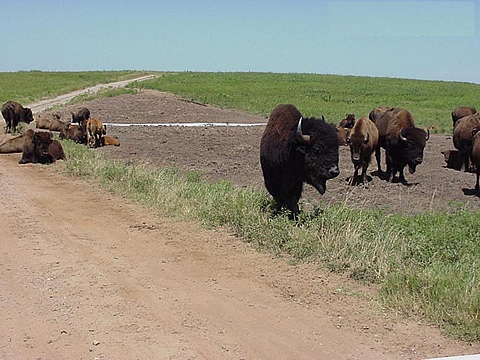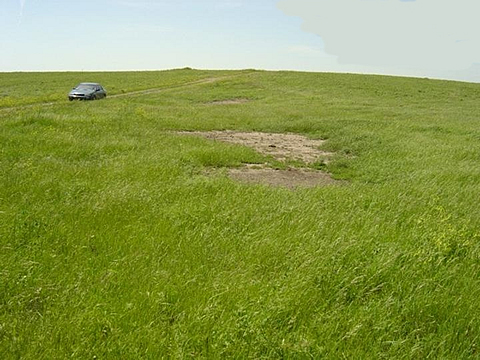Much of the infrastructure of the domestic petroleum industry is aging and requires maintenance. This situation puts the industry at a high risk of equipment failures resulting in environmental damage. Industry resources for environmental protection are limited and it is important to both the domestic petroleum industry and regulators that the protection of the environment be as cost-effective as possible. Non compliance is often associated with accidental releases and not with intentional abuse or neglect. In this context, probabilistic risk assessment (PRA) provides a consistent, logical, and scientifically defensible approach to risk minimization in E&P operations by quantifying the likelihood of certain outcomes and identifying the events that lead to these outcomes. With this tool limited resources can be allocated to areas of high risk thus minimizing the risk of environmental damage and benefiting the domestic petroleum industry, the regulating agency, and the public.
Once a spill of produced fluids has taken place it must be remediated or "cleaned" in order to restore the economic and/or aesthetic value of the impacted land as well as preventing further contamination of soil, groundwater, and surface waters. But how clean is clean? One view is that the soil ecosystem is "clean" when the ecosystem is sufficiently restored to support its previous use or an acceptable alternate use. However, there is currently a shortage of information on the ecological risks associated with oil and brine spills. A lack of information on the ecological risk of oil and brine spills can lead to overly conservative and unnecessarily costly eco-based regulations.
Project Results
The work in this project resulted in the development of a probability risk assessment tool that can be used to minimize the environmental impact of oil field equipment failure. A second product of the research was the development of practical and cost-effective strategies for managing accidental oil and brine spills.
Benefits
The risk assessment tool developed in this project can be used by environmental managers to minimize the environmental impact of equipment failure by identifying the equipment most likely to cause oil and brine releases. The assessment and modeling tools developed in this project can mitigate financial liability and environmental impact through resource allocation that will reduce the severity of ecosystem damage caused by accidental petroleum or brine releases.
The results of this work contribute to the development of practical, appropriate, cost-effective, and technically-defensible strategies for management of accidental spills of produced fluids. Nematode numbers and community structure have been identified as an appropriate ecological indicator which is both sensitive, low-cost, and widely available.
Over 25 papers and presentations have resulted from this project and have been widely distributed within the industry and regulatory communities. The methods developed in this project are technically and ecologically sound and easily taught to small independent producers. The results of this research are being used by the Integrated Petroleum Environmental Consortium (IPEC) as the basis of numerous workshops for small producers, remediation guidelines and training videos, and field analysis kits which IPEC distributes free of charge.
Project Summary
This project has two related areas of focus: (1) development of a probability risk assessment tool for oilfield oil and brine spills, and (2) the study of the effects of oil and brine contamination on grasslands soil ecology and the development of cost-effective remediation methods for oil and brine release sites.
Risk Assessment. The Probability Risk Assessment (PRA) tool was developed to estimate the probability that a spill resulting from equipment failures will occur within a certain time horizon.
Development of the tool was conducted using data and specific examples from the protected Tallgrass Prairie Preserve (TGPP) in Osage County, Oklahoma. The TGPP contains various leases that include over 100 wells with average production of 1.5 to 2 bbl/day of crude oil and 15-20 bbl/day of brine per well.
A data base compiled by the Oklahoma Corporation Commission (OCC) with state-wide oil and brine spill information and interviews with operators was used to identify the primary causes and frequency of oil and brine releases from equipment failures. Causes of oil and brine releases identified include: corrosion and plugging of pipe; corrosion and outlet plugging of storage tanks; corrosion and outlet plugging of oil/water separators; plugging, shaft misalignment, and loss of lubrication in pumps.
Analysis of equipment failures provided the probability that a piece of equipment will fail over a given time span. Other analysis indicated how the size and transport distance of the releases impact potable water, economic loss, and environmental damage.
The result of the analyses and modeling is a Risk Index Map showing the areas of the oil field that have greater than normal risks for oil and brine spills. A Risk Index Map is generated by combining the probability of a failure with the financial loss produced. This Probability Risk Assessment tool can be used by operators to monitor the areas of greatest risk and identify areas most in need of repairs and equipment replacements.
Remediation. The second focus of this project was the study of the effects of oil and brine contamination on grasslands soil ecology and the development of remediation methods. The results of this work provide guidance for performing ecological risk assessments for oil and brine contaminated sites by helping to define appropriate endpoints for remediation and developing appropriate indicators for these endpoints. This part of the project was also conducted on spill sites in the TGPP. The tallgrass prairie ecosystem is more sensitive to the impacts of produced fluids than soil ecosystems in most oil-producing areas and allows subtle responses of ecological indicators to be discerned.
Two brine and oil spill sites were studied. The spills had killed the vegetation in the vicinity and lowered concentrations of soil microbes. In one area the brine had migrated downgradient and contaminated a farm pond. Detailed comparisons were made between the spill sites and closely adjacent portions of the native tallgrass prairie ecosystem.
Biodiversity was recorded in a number of groups of organisms including plants, bacteria, and soil fauna. Comparisons were made between the number of different species to calculate species richness and diversity indices. Indicators of system upset such as low Nitrogen, Phosphorus, and biomass levels were also examined.
After trials of various remediation methods the best method found was a two-step process. The first step involved tilling prairie hay and fertilizer into the affected soil to enhance leaching of the soil and provide soil organic matter that helped to build soil structure and sustain the soil ecosystem. The second step involved installing a subsurface drainage system to intercept brine components, enhance the lateral subsurface transport process, and prevent further contamination of the farm pond. Success of the methods was indicated by reductions in chloride concentrations in the soil by 93% and sodium concentrations by an average of 78% within 4 years.
Approximately 95% of the site revegetated and microbial community structures approached those of the unimpacted control as salt was leached out of the site. Nematode numbers and community structure were identified as sensitive and inexpensive indicators of the status of restoration of damaged soil ecosystems.
The hay and fertilizer remediation methodology can be easily and inexpensively implemented by small independent oil and gas producers without hiring outside contractors. With access to a tractor and tiller and a local source of hay, an independent producer can remediate a spill site for about $200 per acre. The interception trench could also be constructed by the operator but the cost would depend on the topography of the site.





